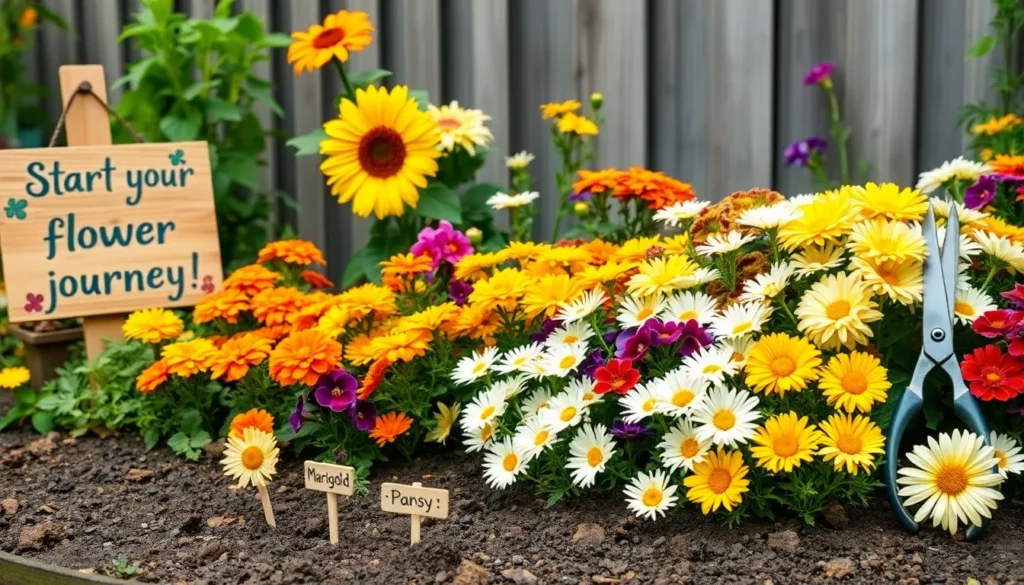Welcome to the vibrant world of flower gardening, where each bloom is a testament to nature’s artistry and your nurturing touch. Whether you’re planting your first seed or have years of experience with a trowel in hand, this guide is your companion to cultivating a garden that’s as beautiful as it is rewarding. With a focus on the essentials, “Flower Gardening Tips for Beginners” offers insights that will make your garden flourish, transforming your outdoor space into a personal paradise.
In this guide, you’ll discover a treasure trove of practical advice designed to help you succeed, from choosing the right plants for your climate to mastering the art of soil preparation. Our tips are crafted to empower you, ensuring that even the greenest of thumbs can cultivate a thriving, colorful haven. Embrace the joy of watching your garden come to life, knowing that each flower you nurture is a step towards creating a space of serenity and delight. With our approachable techniques, you’ll feel confident and inspired to turn your gardening dreams into a stunning reality.
Choose Sun-Loving Flower Varieties
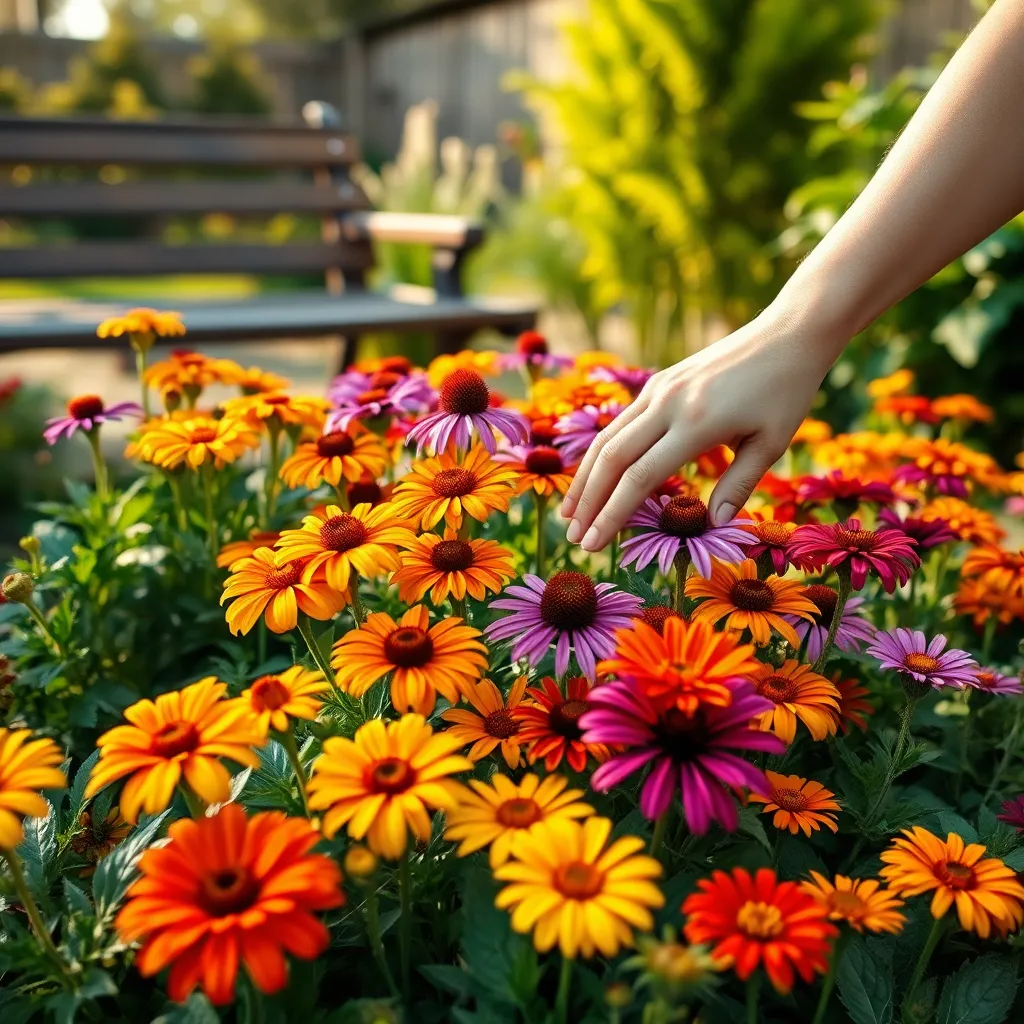
Sun-loving flowers thrive in areas that receive at least six hours of direct sunlight each day. These plants are perfect for sunny spots in your garden and can also add vibrant color to patios or balcony planters.
Consider planting marigolds, which are easy to grow and resistant to pests. They prefer well-drained soil and should be watered moderately, ensuring the soil doesn’t become waterlogged.
Another excellent choice is zinnias, which are known for their stunning blooms and easy maintenance. Plant them in rich, well-drained soil and deadhead regularly to encourage continuous blooming throughout the season.
For more experienced gardeners, try incorporating lavender, which not only adds beauty but also offers a wonderful fragrance. Lavender thrives in sandy, well-drained soil and benefits from occasional pruning to maintain its shape and encourage new growth.
Prepare Rich, Well-Draining Soil
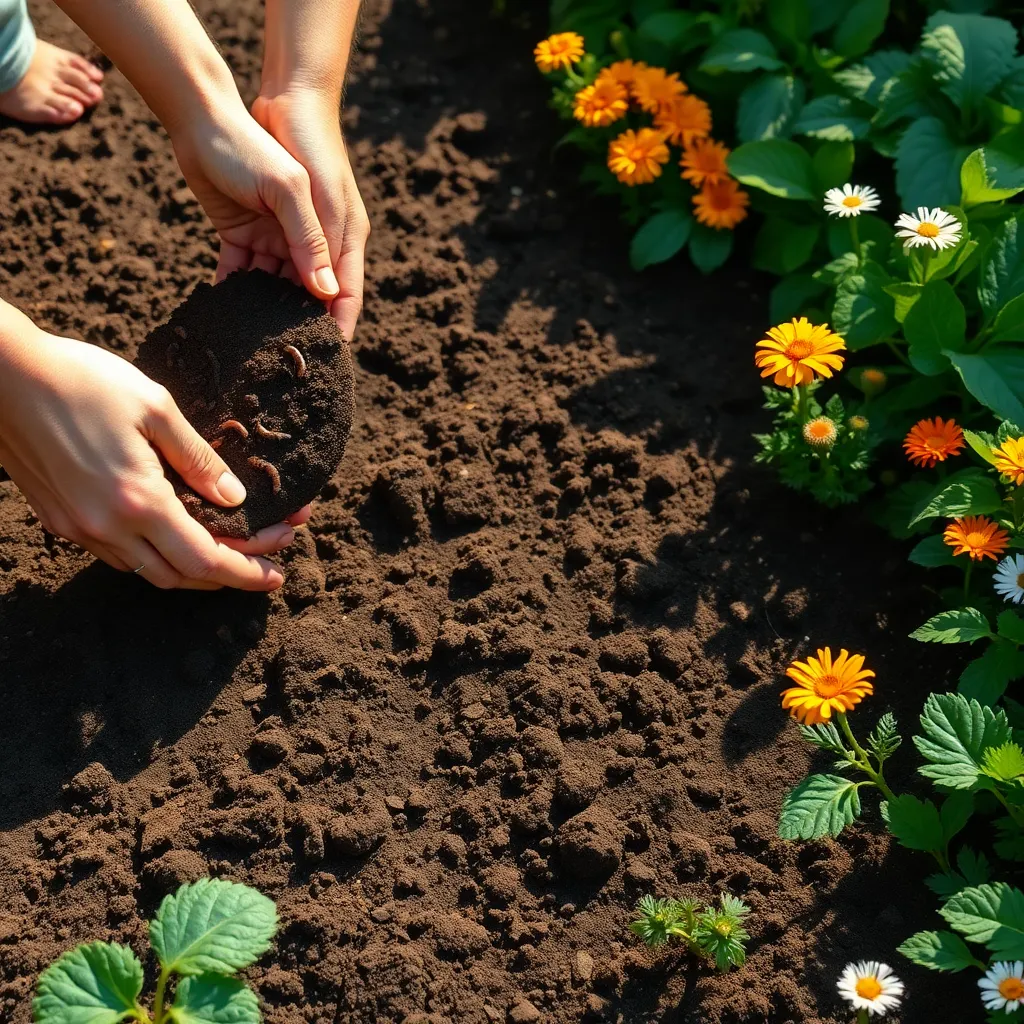
Rich, well-draining soil is the foundation of a successful flower garden, providing essential nutrients and preventing waterlogging. To begin, test your soil to determine its pH and nutrient composition—this will inform any amendments needed.
Incorporate organic matter such as compost or well-rotted manure to enrich the soil with nutrients and improve its structure. This not only boosts fertility but also enhances the soil’s ability to retain moisture while allowing excess water to drain away.
For soils that are heavy in clay, consider adding coarse sand or perlite to increase drainage. This modification prevents the roots from sitting in water, reducing the risk of rot and promoting healthy growth.
Consistently monitor the soil’s moisture level by inserting your finger into the ground up to the second knuckle. If it feels dry, it’s time to water; if it’s still moist, wait a day or two before checking again.
Water Flowers Consistently and Wisely
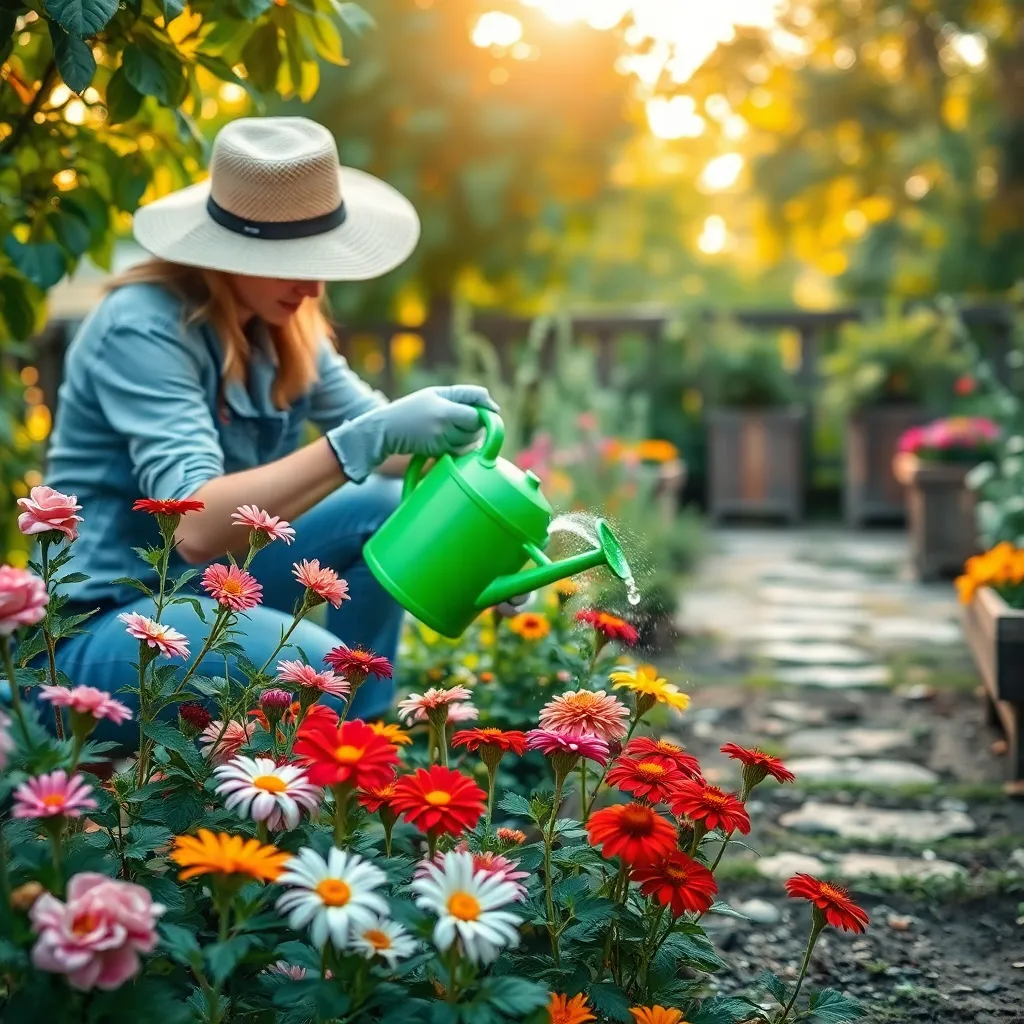
Watering flowers consistently is a fundamental aspect of successful gardening. It’s crucial to understand that different plants have different water needs, so always consider the specific requirements of your plants.
In general, most flowers benefit from being watered deeply but less frequently. This encourages roots to grow deeper into the soil, leading to healthier and more drought-resistant plants.
Always water early in the morning or in the late afternoon to minimize evaporation and allow plants to absorb moisture effectively. Avoid watering in the evening, as this can promote fungal diseases due to lingering moisture on the leaves.
For those looking to optimize their watering routine, consider incorporating a drip irrigation system or soaker hoses. These methods deliver water directly to the soil, reducing waste and ensuring that roots receive adequate moisture.
- Check the soil moisture with your finger before watering—if the top inch is dry, it’s time to water.
- Mulch around your plants to help retain moisture and regulate soil temperature.
As you gain experience, you’ll learn to adjust watering based on your specific garden conditions and climate. Remember, consistent and wise watering will not only save water but also result in vibrant and thriving flowers.
Prune Regularly to Encourage Growth
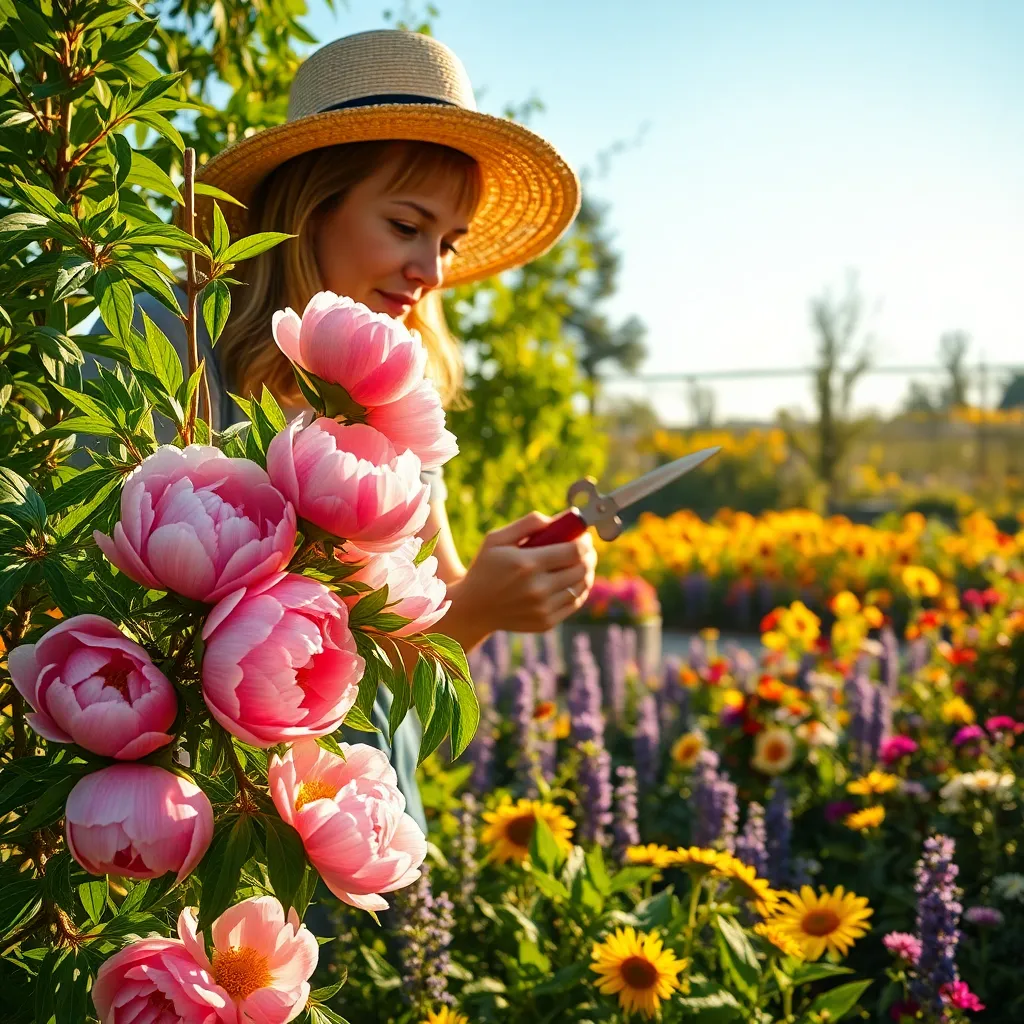
Regular pruning is essential to promote healthy growth in your flower garden. By removing dead or overgrown stems, you allow more sunlight and air to reach the healthy parts of the plant, boosting their vitality.
Consider using clean, sharp pruning shears to make precise cuts. This reduces the risk of disease and ensures that your plants recover quickly from pruning.
It’s crucial to prune at the right time of year for each type of flower. For instance, prune spring-flowering plants just after they bloom, while summer-flowering plants benefit from a late winter or early spring trim.
Beginners can start by trimming back any dead or diseased branches, which are easy to identify and remove. For more advanced gardeners, shaping plants can encourage a more robust and aesthetically pleasing bloom.
When pruning, always cut at a 45-degree angle above a leaf node. This encourages new growth in the right direction and helps the plant maintain a healthy structure.
Apply Mulch to Retain Moisture
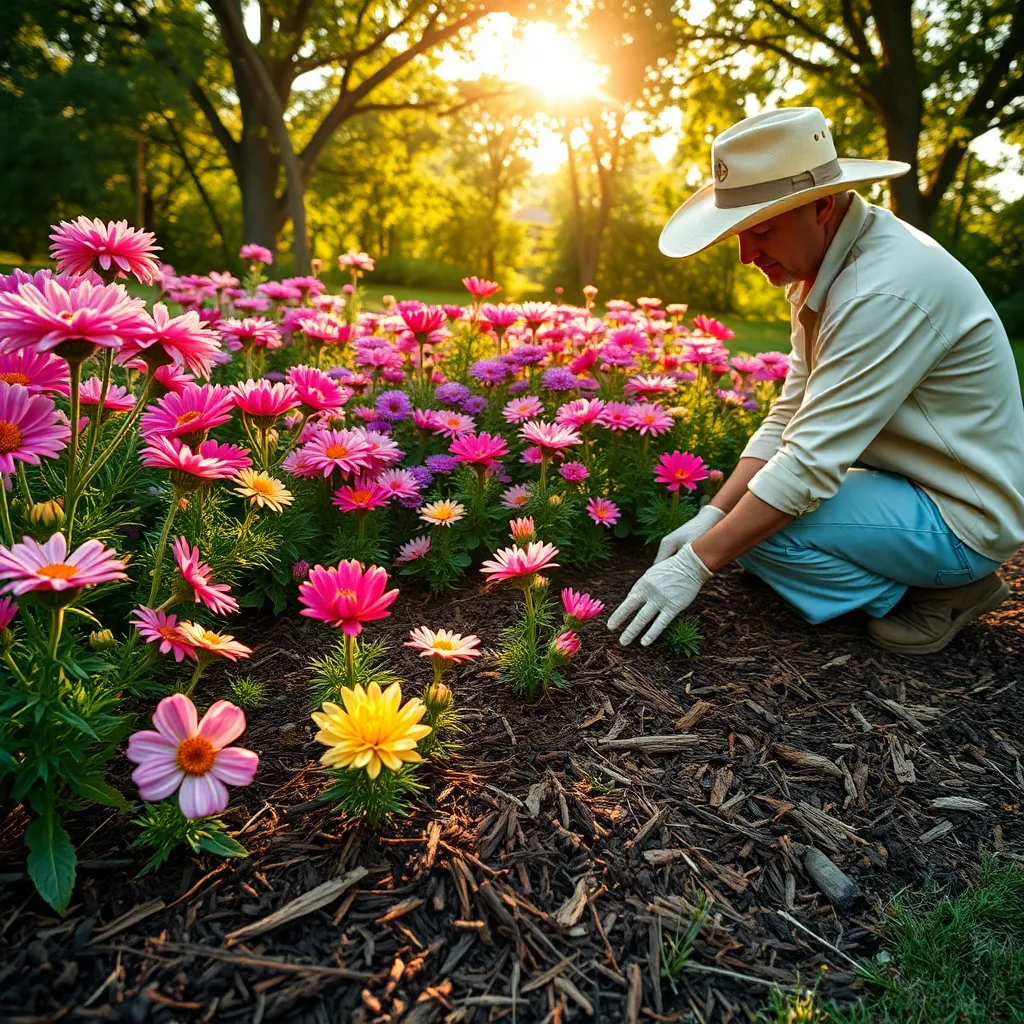
Applying mulch is a simple yet effective way to retain moisture in your flower garden. By covering the soil with a layer of organic material, you help reduce evaporation and keep the roots cool.
Start by choosing the right mulch for your plants; options like bark chips, straw, or leaf mold are excellent choices. Organic mulches not only conserve moisture but also improve soil fertility as they decompose.
Spread a 2 to 3-inch layer of mulch around your plants, ensuring it doesn’t touch the stems to prevent rot. This depth is ideal for keeping the soil consistently moist and minimizing the need for frequent watering.
Mulching also helps suppress weeds, making it a great time-saver for busy gardeners. For those living in regions with hot summers, a thicker layer of mulch can provide added insulation against extreme temperatures.
Conclusion: Growing Success with These Plants
In nurturing the vibrant blooms of your relationship garden, we’ve explored five essential concepts: cultivating patience, understanding each other’s needs, the importance of consistent communication, nurturing growth through shared experiences, and embracing flexibility in the face of change. These foundational elements help foster a thriving partnership, much like tending to a garden with love and care.
As an actionable next step, take a moment today to engage in a meaningful conversation with your partner about one new activity you’d both like to experience together. This proactive approach to shared growth can rejuvenate your connection and plant seeds for future joy.
Remember, relationships, like gardens, require ongoing attention and care. Bookmark this article to revisit these tips as you continue to nurture your bond. By anchoring these insights in your daily life, you pave the way for enduring relationship success.
Let this be your starting point for a flourishing partnership, where love and understanding blossom through every season. Keep this guide close, and watch as your relationship blooms into an even more beautiful journey.

